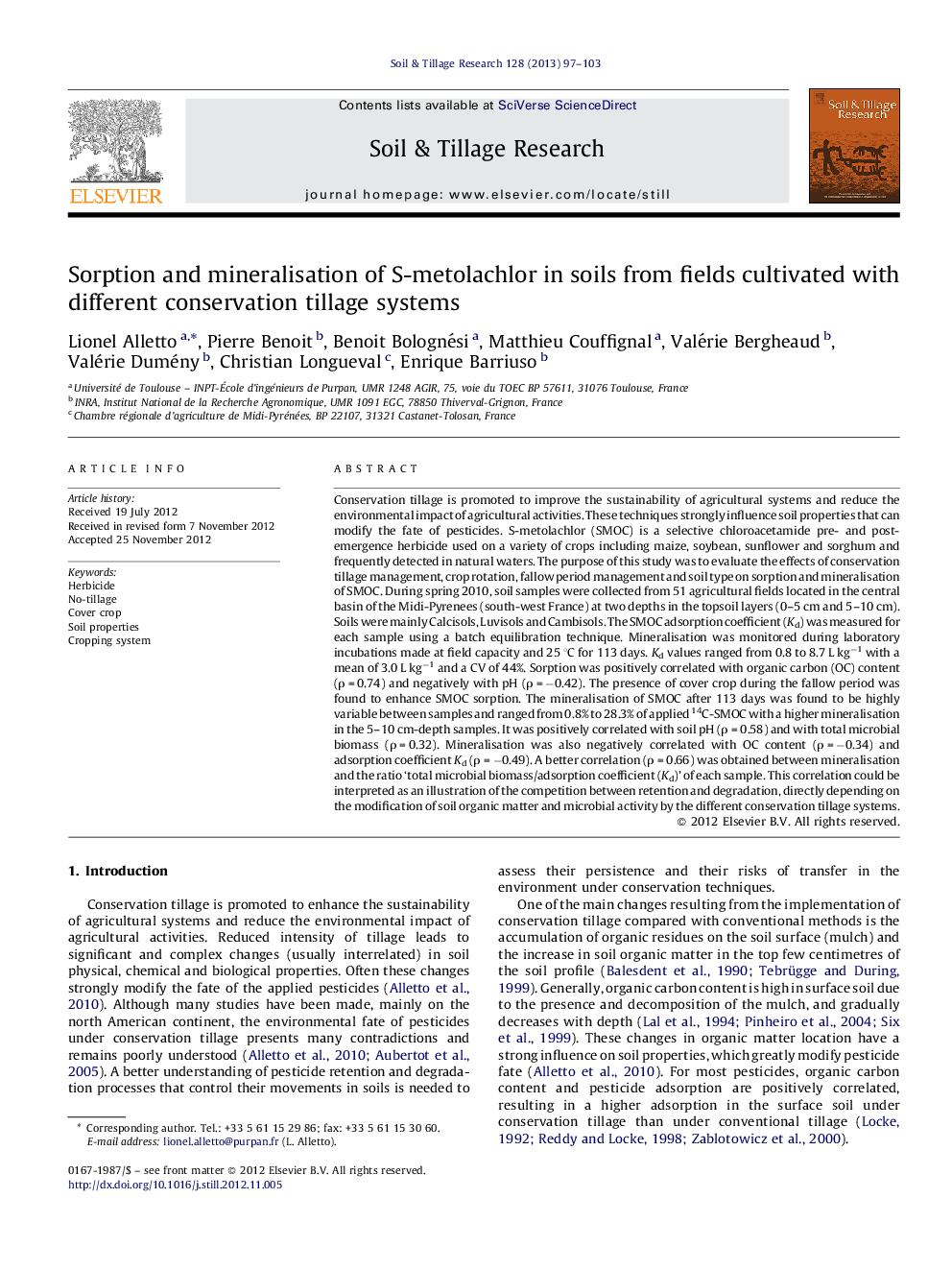| Article ID | Journal | Published Year | Pages | File Type |
|---|---|---|---|---|
| 305917 | Soil and Tillage Research | 2013 | 7 Pages |
Conservation tillage is promoted to improve the sustainability of agricultural systems and reduce the environmental impact of agricultural activities. These techniques strongly influence soil properties that can modify the fate of pesticides. S-metolachlor (SMOC) is a selective chloroacetamide pre- and post-emergence herbicide used on a variety of crops including maize, soybean, sunflower and sorghum and frequently detected in natural waters. The purpose of this study was to evaluate the effects of conservation tillage management, crop rotation, fallow period management and soil type on sorption and mineralisation of SMOC. During spring 2010, soil samples were collected from 51 agricultural fields located in the central basin of the Midi-Pyrenees (south-west France) at two depths in the topsoil layers (0–5 cm and 5–10 cm). Soils were mainly Calcisols, Luvisols and Cambisols. The SMOC adsorption coefficient (Kd) was measured for each sample using a batch equilibration technique. Mineralisation was monitored during laboratory incubations made at field capacity and 25 °C for 113 days. Kd values ranged from 0.8 to 8.7 L kg−1 with a mean of 3.0 L kg−1 and a CV of 44%. Sorption was positively correlated with organic carbon (OC) content (ρ = 0.74) and negatively with pH (ρ = −0.42). The presence of cover crop during the fallow period was found to enhance SMOC sorption. The mineralisation of SMOC after 113 days was found to be highly variable between samples and ranged from 0.8% to 28.3% of applied 14C-SMOC with a higher mineralisation in the 5–10 cm-depth samples. It was positively correlated with soil pH (ρ = 0.58) and with total microbial biomass (ρ = 0.32). Mineralisation was also negatively correlated with OC content (ρ = −0.34) and adsorption coefficient Kd (ρ = −0.49). A better correlation (ρ = 0.66) was obtained between mineralisation and the ratio ‘total microbial biomass/adsorption coefficient (Kd)’ of each sample. This correlation could be interpreted as an illustration of the competition between retention and degradation, directly depending on the modification of soil organic matter and microbial activity by the different conservation tillage systems.
► SMOC sorption and mineralisation are variable among conservation tillage samples. ► Sowing cover crops in conservation tillage systems increases SMOC sorption. ► SMOC mineralisation is correlated with the ratio ‘microbial biomass/sorption coefficient’.
